Efforts underway in Texas are ushering in a new era of inclusivity with mouth models, lithophanes, robots, talking tools and more
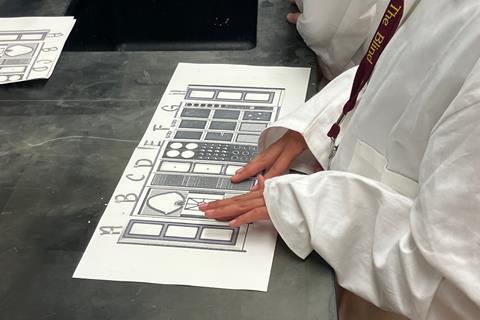
As research laboratories increasingly move towards automation, the technological revolution that can make chemists more efficient is also enabling those who are blind or visually impaired to participate in the field as they never could before. Bryan Shaw, a chemistry and biochemistry professor at Baylor University in Texas, US, is leading the way, using government grants to develop novel tactile tools that make his lab, and chemistry in general, much more accessible.
Shaw, whose 15-year old son developed retinoblastoma as an infant and has since had one of his eyes removed, started out by leading his team to make bite-sized models from gelatin or nontoxic resin that made it possible for protein shapes to be identified with the mouth. The team went on to use 3D printing techniques to convert scientific images into thin 3D constructions known as lithophanes that can present high resolution data in a form that is interpretable by blind or visually impaired researchers.
A newly-published study by Shaw’s team, which incorporated students from Texas School for the Blind and Visually Impaired (TSBVI), focused on the use of lithophanes to convert images from scientific textbooks into tactile formats for students with blindness or low vision. This technique enabled the students to accurately describe, recall and distinguish high-resolution data and imagery at an average accuracy of 88%, which is comparable to their sighted peers.
Demonstrating accessibility
Shaw’s group runs a programme, funded by the US National Institutes of Health, to make chemistry labs accessible to high schoolers at TSBVI. As part of that effort, in October 2022 and October 2023 blind and visually impaired students from TSBVI participated in a multi-day demonstration in his lab to test out these tools and also learn that science and research are viable careers for them.
The 10 TSBVI highschoolers worked in the lab alongside blind chemist mentors from across the US like Matthew Guberman-Pfeffer (a theoretical chemist and postdoctoral fellow at Baylor), Mona Minkara (a computational chemist at Northeastern University in Boston) and Cary Supalo (a research developer at the nonprofit Educational Testing Service in Princeton, New Jersey).
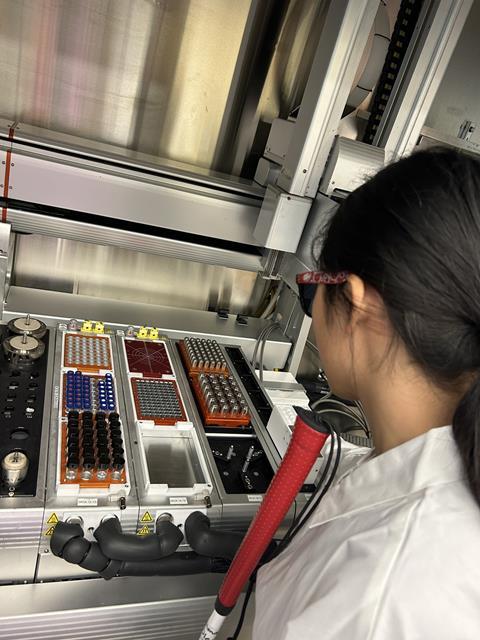
In the most recent demo, the students were able to conduct an experiment using a robot developed by Mayte Gonzales, a fourth year PhD student in Shaw’s lab, that can measure, pour and conduct precise experiments. It is essentially a table with holes containing various vials, as well as a balance and two arms on an XYZ motor. These arms can suck up powder, weigh it, take it off the scale and place it in a specific vial, and dispense liquids, among other things.
‘We specialise in working with different metalloproteins, and for this experiment we did cytochrome C, and we also did the protein α-synuclein, and we made a protein charge ladder,’ Gonzales explains. The students modified this protein using a chemical that targets a specific amino acid within the protein.
‘They were really excited because … they were listening to it, and then I was guiding them, doing a play-by-play, as the arm was taking the vial to the specific places or dispensing any of the liquids,’ Gonzales recounts.
‘We want the students to know in high school, or in college, or as postdocs like Matthew, that if they want to do experimental chemistry it’s going to be possible because robotics are becoming more important in the lab,’ Shaw tells Chemistry World. ‘So, if you want to be a theoretical chemist, great. If you don’t, you have a good shot now of getting in the lab and not having to rely on sighted people to do your experiments for you.’
Shaw’s team is currently working on making its robot’s interface more accessible. ‘It’s a graphical user interface, so it’s not visually accessible yet,’ explains Guberman-Pfeffer. The robot can read out whatever is under the cursor on the computer screen, but that is of limited use to scientists with blindness. ‘It’ll do all the mixing and weighing for them, but somebody’s got to load the details in the queue for them,’ Shaw explains.
Real research
In April, Shaw will once again open his lab to TSBVI students. They will have a chance to do more experiments using a new tool developed by Levi Garza, a second year PhD student in Shaw’s lab, to analyse and purify proteins. ‘Instead of doing just class-type lab experiments, they are going do some real research for us and then we’ll put them on our paper,’ Shaw says.
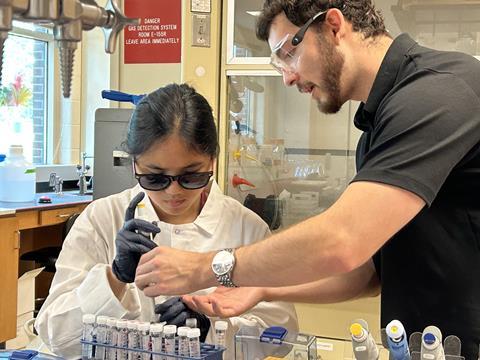
Garza’s new device, which is expected to be detailed in a paper published this year or early next year, allows people with blindness or mobility disorders to perform sodium dodecyl-sulfate polyacrylamide gel electrophoresis (SDS-PAGE), which is a common technique researchers use to identify what proteins are present in a sample and to quantify their molecular weight.
Currently, the main limitation with SDS-PAGE is that it requires a researcher to align the pipette tip with the specific well horizonally, and it must be brought forward enough to slide in between the two glass plates that contain the corresponding well. Then, the pipette tip must be lowered so that it reaches the middle of the well without going too far and puncturing the gel.
‘Loading the sample in the wrong place or puncturing the gel can result in a failed analysis which can ruin one to two days of work and cost tens of thousands of dollars per sample,’ Garza explains.
Guberman-Pfeffer is very enthusiastic about this new tool. As an undergraduate student, he had to complete hundreds of hours of lab work to obtain an American Chemical Society-certified chemistry degree, but he says that time involved standing in a lab and only doing experiments by proxy through a sighted lab assistant whom he directed. ‘I [couldn’t] do lab work myself until the experience of this device that Levi and Bryan created – that was the first wet lab experiment and experience I personally had, and it was mind blowing.’
Similarly, Supalo says that when he was an undergraduate student there really weren’t any talking lab tools and so he had to rely on resources like a human assistant, as well as on braille, raised-line drawings, tactile graphics and audio formatted books.
Envisioning the future
Minkara, who lost her eyesight when she was seven years old but has been doing research funded by the US National Science Foundation since she was 18 years old, is excited about what she observed during the most recent Baylor demo with the TSBVI highschoolers.
‘I saw students who had the chance to truly experience science,’ says Minkara, who in 2009 was the first blind person to receive a science degree from Wellesley College in Massachusetts. ‘These blind kids got to do the demo themselves, got to experience being scientists, realised that they could have the chance to do it if they want,’ she adds. ‘I think that’s something that every kid has a right to figure out.’
Currently, just a handful of chemists in the US have severe visual impairments, and there is a significant ‘activation barrier’ that they need to climb over, according to Guberman-Pfeffer. ‘All of this work – the lithophanes and the tongue models of proteins – are a catalyst to lower the entry barrier so that there’s a greater possibility that people can get into chemistry and accelerate the rate of discovery in the field,’ he says.
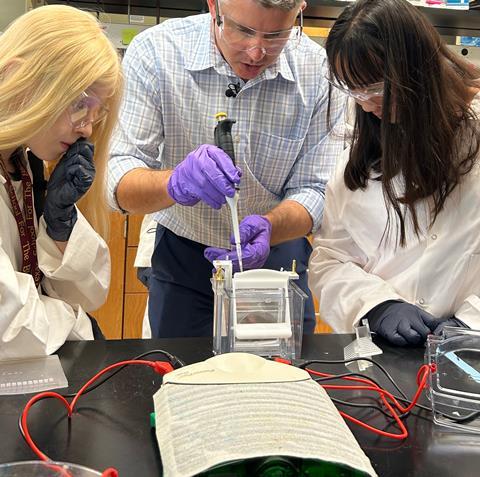
Shaw agrees, and he argues that chemistry is a natural subject area for people with blindness. ‘Nobody can see atoms, all we do as chemists is come up with ways to visualise and think about and understand things we can’t see,’ he says.
Shaw urges chemists and other researchers who want to make their labs friendlier to people with blindness and other disabilities to make all their raw data and imagery accessible. ‘That’s the beauty of the lithophane, you can see signal-to-noise ratio,’ Shaw says.
He also recommends that they make the experiments accessible one instrument at a time. ‘Don’t get hung up on total independence, you don’t have to be totally independent – nobody is,’ Shaw continues. ‘Some people get obsessed that the person with blindness has to do everything themselves.’
Other emerging tools
Cary Supalo’s activities developing text-to-speech (TTS) enabled lab tools began in graduate school. The submersible, audible light sensor known as SALS, which creates an audio signal that can be used to observe reactions in a solution in real time, was prototyped as part of his PhD work at Pennsylvania State University. The American Printing House for the Blind eventually commercialised that technology in September 2022.
Another exciting emerging technology is multi-line refreshable braille devices to collect and analyse scientific data. For decades, refreshable braille devices have been limited to one line of text. The multi-line capability allows a researcher to represent graphs in a dynamic way by depicting graphical changes with respect to time.
Greg Williams, a chemist who was born blind due to glaucoma who is with the US-based Stem consulting and access technology company Independence Science, is working on developing a new science data logger that incorporates such a multi-line device in a laboratory context to do data collection. The images that this tool generates can show the graphics being collected in real-time, concurrent with the data collection, according to Supalo.
This allows a blind or low vision user to ‘feel the trend of the data’ as it is being collected and to determine the value of a particular data point, giving them immediate insight into the experimental results, explains Williams. He is currently working with colleagues to pursue another grant to help develop a commercial product.
References
E Alanzo et al, Sci. Adv., 2024, DOI: 10.1126/sciadv.adj8099





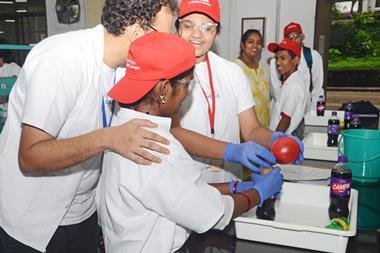
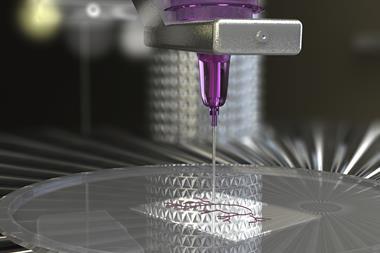
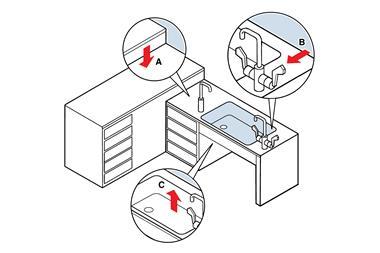
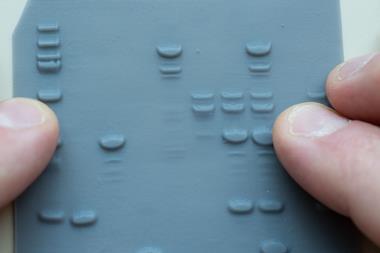

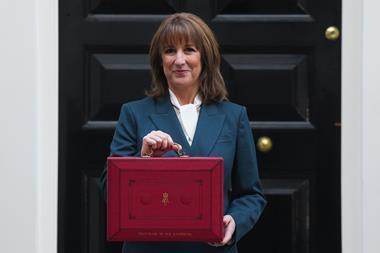

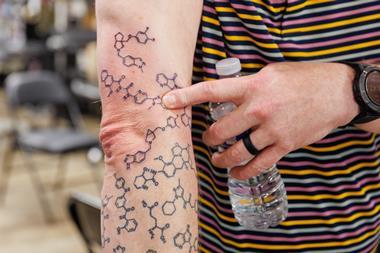
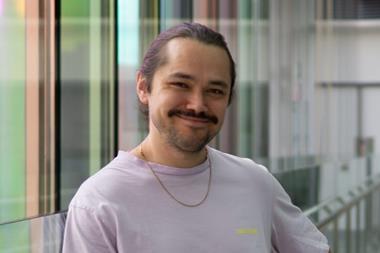

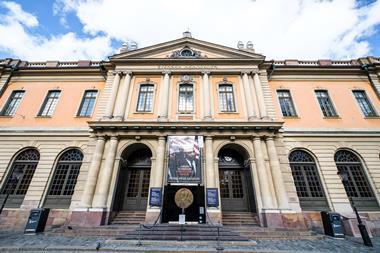

No comments yet